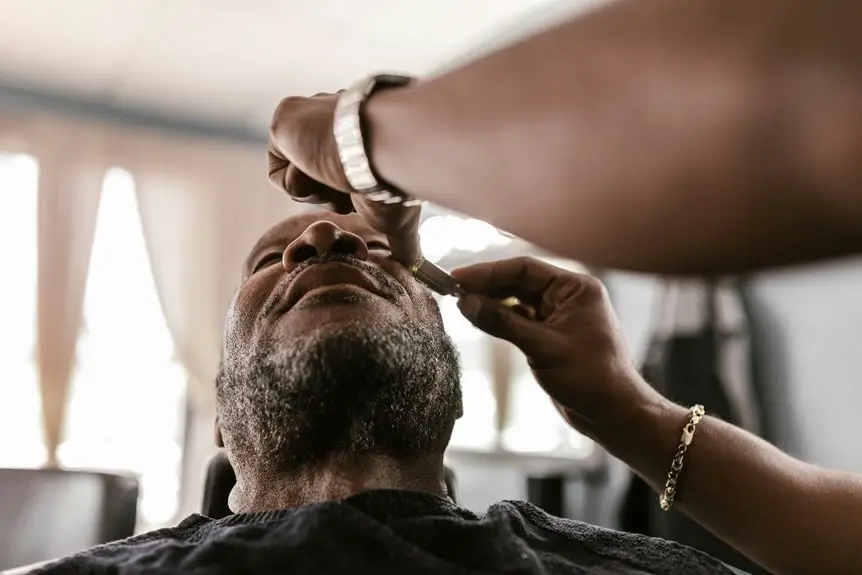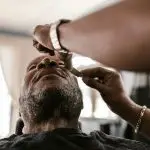Maintaining your chairs is crucial if you want them to last. Regular cleaning and proper care can make a significant difference in their lifespan. From protecting them from sunlight to tightening loose screws, there are several steps you can take to ensure they remain in good condition. So, how can you implement these strategies effectively and avoid common pitfalls? Let's explore the essential tips to keep your chairs looking and functioning their best.
Table of Contents
Key Takeaways
- Establish a regular cleaning routine to remove dirt and stains, preserving the chair's appearance and hygiene.
- Use protective covers to shield chairs from dust, moisture, and UV damage when not in use.
- Inspect chairs regularly for signs of damage and tighten loose screws or joints to ensure stability.
- Store chairs in a cool, dry place away from direct sunlight and heating sources to prevent material degradation.
- Apply appropriate conditioning products to leather and upholstery to prevent drying, cracking, and fading over time.
Regular Cleaning Routines
To keep your chair looking its best, establish a regular cleaning routine that fits your lifestyle.
Start by dusting your chair weekly with a soft cloth to remove any surface dirt. If it's upholstered, vacuum it regularly to prevent dirt buildup.
For spills, blot them immediately with a clean cloth—don't rub, as this can spread the stain. Depending on the material, spot clean with a suitable cleaner, checking for fabric compatibility first.
For wooden chairs, use a damp cloth and a gentle wood cleaner to maintain shine.
Lastly, consider deep cleaning every few months to keep it fresh. By staying consistent, you'll extend your chair's lifespan and maintain its appearance for years to come.
Protecting From Sunlight
To keep your chairs looking great, it's essential to protect them from sunlight.
Consider using UV-resistant materials or protective covers to shield them from harmful rays.
Also, think about where you place your chairs indoors to minimize exposure to direct sunlight.
UV-Resistant Materials
While enjoying your outdoor space, it's crucial to consider the materials used in your chairs, especially when it comes to UV resistance. Chairs made from UV-resistant materials can stand up to sun exposure, helping you avoid fading and damage over time. Look for options like aluminum, high-density polyethylene (HDPE), and certain treated woods that offer enhanced durability. These materials not only protect your chairs but also ensure comfort and style.
Here's a quick comparison of common materials:
| Material | UV Resistance | Durability |
|---|---|---|
| Aluminum | High | Excellent |
| HDPE | High | Very Good |
| Teak Wood | Moderate | Good |
| Wicker | Low | Moderate |
| Plastic | Variable | Fair |
Choosing wisely can extend the life of your outdoor furniture!
Use Protective Covers
Using protective covers is essential for maintaining your outdoor chairs, especially when it comes to shielding them from harmful sunlight. UV rays can fade colors and weaken materials over time, leading to premature wear.
By investing in high-quality, UV-resistant covers, you can keep your chairs looking fresh and extend their lifespan significantly.
When choosing covers, ensure they fit snugly to prevent wind from blowing them away. Opt for breathable materials to prevent moisture buildup, which can lead to mold and mildew.
Don't forget to remove the covers during use to enjoy your chairs fully.
Strategic Placement Indoors
Even with protective covers, indoor placement plays a significant role in preserving your chairs from sunlight damage.
Position your chairs away from direct sunlight, especially if they're made of wood or fabric, as UV rays can fade colors and weaken materials over time. Consider placing them near walls or in corners where they're shielded from bright light.
If you can't avoid direct sunlight, use sheer curtains or blinds to filter the light. Rotate the chairs periodically to ensure even exposure to light and prevent uneven fading.
Inspecting for Damage
When it comes to chair maintenance, regularly inspecting for damage is essential.
Start by assessing the visual condition, checking joint stability, and examining the upholstery for wear and tear.
This simple routine can help you catch issues before they become serious problems.
Visual Damage Assessment
A thorough visual damage assessment is crucial for maintaining the longevity of your chair. Start by inspecting the upholstery for any tears, stains, or fading. Look closely at the seams and edges, where wear and tear often occur.
Check for scratches, dents, or discoloration on wooden parts, as these can weaken the structure over time. Don't forget to examine the legs and base for any cracks or chips that could affect stability.
If your chair has metal components, look for rust or corrosion. Pay attention to any loose screws or bolts, as well.
Regularly performing this visual check can help you catch small issues before they become major problems, ensuring your chair stays in great shape for years to come.
Check Joint Stability
After assessing the visual condition of your chair, it's important to check the stability of the joints.
Start by gently wiggling the legs and arms to see if they feel loose or unstable. Pay close attention to any creaking sounds, as they can indicate underlying issues.
If you notice any movement, inspect the joints for cracks or wear. Tighten any loose screws or bolts you find, using the appropriate tools.
If a joint is damaged beyond repair, consider replacing it or consulting a professional.
Regularly checking joint stability not only ensures your chair remains safe to use but also extends its overall lifespan.
Keep this maintenance routine in mind to enjoy your chair for years to come.
Examine Upholstery Condition
While checking your chair's stability is essential, you shouldn't overlook the upholstery condition.
Start by visually inspecting the fabric for any signs of wear, such as fraying, discoloration, or stains. Run your fingers along the seams to check for loose threads or tears.
If your chair has cushions, press down on them to see if they've lost their shape or support.
Don't forget to check underneath for hidden damage; sometimes, pests or moisture can affect the upholstery.
If you notice any issues, consider spot cleaning or professional treatment to prolong the life of your chair.
Regular maintenance won't only keep your chair looking good but also enhance your overall comfort.
Tightening Loose Screws and Joints
When you notice your chair wobbling or squeaking, it's often due to loose screws and joints that need attention.
Start by flipping the chair over to access the underside. Use a screwdriver or wrench to check all visible screws and bolts. Tighten any that feel loose, but be careful not to overtighten, as this can strip the wood or damage the material.
Pay special attention to joints, especially where the legs meet the seat. If a joint feels particularly wobbly, consider using wood glue for added stability.
Once you've tightened everything, test the chair by gently rocking it to ensure it's secure.
Regularly checking these components will extend your chair's lifespan and enhance your comfort.
Conditioning Leather and Upholstery
Conditioning leather and upholstery is crucial for maintaining the look and feel of your chair. Regular conditioning prevents drying, cracking, and fading. To keep your chair in top shape, use a conditioner specifically designed for the material. Apply it evenly and allow it to absorb fully.
Here's a quick reference table to help you remember the basics:
| Step | Action |
|---|---|
| 1. Clean | Dust and wipe down surfaces. |
| 2. Condition | Apply the conditioner evenly. |
| 3. Buff | Gently buff with a soft cloth. |
Using Appropriate Cleaning Products
Maintaining your chair's appearance goes beyond just conditioning leather and upholstery; using the right cleaning products plays a key role too. Choosing appropriate cleaners will prevent damage and ensure longevity.
Always read labels and avoid harsh chemicals that can degrade materials over time.
Here are some tips for selecting the right products:
- Use mild soap and water for general cleaning.
- Opt for pH-balanced cleaners specifically designed for your chair's material.
- Test any new product on a hidden area first to check for adverse reactions.
- Avoid abrasive scrubs that could scratch surfaces.
Storing Chairs Properly
Properly storing your chairs can extend their lifespan significantly. To ensure they remain in excellent condition, follow these key storage tips:
| Tip | Description | Benefits |
|---|---|---|
| Clean Before Storing | Always clean your chairs before putting them away. | Prevents dirt buildup and damage. |
| Use Protective Covers | Invest in covers for added protection against dust and moisture. | Shields chairs from environmental hazards. |
| Stack or Fold | Utilize stacking or folding chairs to save space. | Reduces wear and tear on chair legs. |
| Store in a Dry Place | Choose a cool, dry location away from direct sunlight. | Prevents warping and fading. |
Frequently Asked Questions
How Often Should I Replace My Chair Instead of Maintaining It?
You should consider replacing your chair every five to seven years, depending on usage and wear. If you notice significant discomfort or structural issues, it's time to invest in a new one.
Can I Use Home Remedies for Cleaning My Chair?
Absolutely, you can use home remedies to clean your chair! Mix vinegar and water for a natural solution, or use baking soda to tackle stains. Just test in an inconspicuous area first to ensure it's safe.
What Are Signs My Chair Needs Immediate Replacement?
If your chair has visible damage, like cracks or severe wobbling, or if you experience discomfort while sitting, it's time to consider replacement. Don't compromise your comfort or safety; a new chair can make a significant difference.
Are There Specific Products to Avoid When Cleaning Chairs?
When cleaning chairs, avoid harsh chemicals like bleach or ammonia, as they can damage materials. Don't use abrasive scrubbers that scratch surfaces. Instead, opt for gentle cleaners specifically designed for the type of chair you're maintaining.
How Do I Choose the Right Chair for Durability?
When choosing a durable chair, look for high-quality materials like solid wood or metal frames. Check reviews for longevity, and consider your usage needs. Comfort and warranty can also indicate a chair's overall durability.




